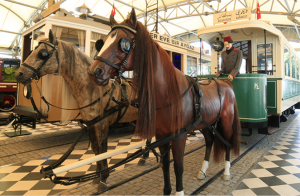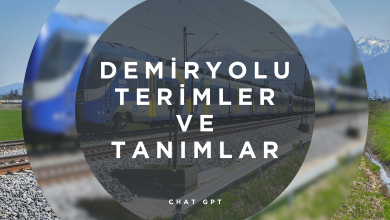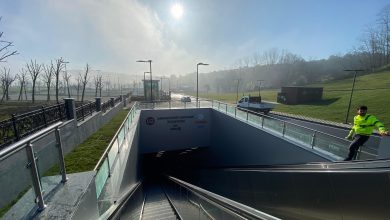
The urban rail system story, which started with the horse-drawn tram, was crowned with steam and electric trains with the development of technology, and with the development of vehicle technologies over time, it first transformed into LRT and finally Metro systems and reached its current modern form.
With the gathering of societies in certain centers, urbanization and population density continue to increase in big cities without slowing down; Many problems such as transportation and access problems, healthy living space, air pollution and energy shortages are growing and our cities are becoming unsustainable day by day. When this problem in cities is considered in terms of transportation, public transportation and especially rail systems come to the fore a little more in order to provide transportation in dense city centers with low fuel consumption and carbon emissions, in an environmentally friendly, safe, comfortable and fast way. These systems, which are generally seen as having a high investment cost compared to highways, are characterized by carrying capacity, energy and fuel consumption per passenger,
So how did these “Rail Systems”, which have become almost mandatory in our metropolitan cities, come about?
It is said that the “Railway” project, consisting of wrought iron bars, each 90 cm long and weighing 22 kilograms, was implemented in England in 1797 as the first known railway project in the history of the world. (We say known because the remains found in archaeological excavations continue to surprise us every time. If we come across the news that one day, “Remains of a railway line dating back a few thousand years have been found”, we are almost in a position to not be surprised.)
It is known that the first railroad vehicles were pulled by horses or humans, and this practice continued long after the invention of the steam engine (See NYC in the 1960s ). The self-powered locomotive was first driven from Penydaren to Glamorgan in 1804 . Despite the majority of those who claimed that this train, which was built by Richard Treviftchick and which pulled five wagons carrying 10 tons of cargo and 70 people, would not work due to the friction of the railway with the metal wheels, the expedition was successful.
Stephenson, who was a machine builder and technician in Northumberland, successfully completed the production of a locomotive he named “My Lord” and started to manufacture locomotives for the railways. In 1825, railway transportation began with the passenger trains pulled by the locomotives made by Stephenson.
In 1832, the horse-drawn tram, one of the first urban rail system examples, started to transport passengers between Harlem and Manhattan (in New York). The horse-drawn tram, which started to spread in New York and New Orleans in the 1830s, and in many cities such as Boston, Baltimore, Chicago, and Pittsburgh in the 1850s, prevented the existing road traffic thanks to the development of the corrugated rail in 1852 and the fact that the railway line was embedded in the road pavement. and thus accelerated its spread.
More than 100 million carriage rides took place in New York annually, and by 1880 there were at least 150,000 horses in the city. Some of these provided transportation for people, while others served to transport goods from trains into and around the growing metropolis. From 10 kg per horse per day to millions of kilograms per day and hundreds of thousands of tons of horse manure per year, tens of millions of liters of waste were generated. Although it brought economic gain as a fertilizer for a while, it kept the streets clean, but over time, it could not prevent the formation of heaps of smelly filth.
Sustainability and Transportation of the Future
In Europe, the horse-drawn tram line, which was put into operation for the first time in Paris in 1853, did not develop much until the 1860s. In the 1860s, London (1861), St. In cities such as St. Petersburg (1863), Berlin (1865), Vienna (1865) and Budapest (1866), horse-drawn tram lines were opened. However, it was much more accepted in America than in Europe and was used in many of the important streets. (Vuchic, 2007)
Due to the high operating costs of horse-drawn trams, the difficulty of feeding and maintaining the horses, and their impact on the environment, new solutions were sought. In 1873, the steam-powered tram was developed, and in 1880, the electric-powered tram was developed by Russian engineer Fyodor Pirotsky. In 1881, the first electric tram line built by Werner Von Siemens was put into operation in Berlin. If the technical problems in electricity generation and the transfer of electricity to vehicles are solved, electric trams have quickly replaced horse-drawn trams because they are very convenient and economical. As of 1914, horse-drawn trams were abolished in New York, with the spread of internal combustion vehicles as well as electric trams. In order to transmit the electric current to the tram vehicles, a third rail carrying electric current was considered, but this was extremely dangerous for pedestrians with the safety conditions at that time. Although this method is mostly used in subway systems today, there is no broadcast on tram lines, but embedded energy rail systems are used with various safety measures. (See. Although there is no broadcast on tram lines, embedded energy rail systems are used with various safety measures. (See. Although there is no broadcast on tram lines, embedded energy rail systems are used with various safety measures. (See.T5 Tram Line-Istanbul )
Photo and Description: Rahmi Koç Museum
The first horse-drawn tram service in our country was made on the Azapkapı-Ortaköy route in Istanbul on September 3, 1872, and the horse-drawn trams were replaced by electric ones in 1914. This tram served on the Beşiktaş-Karaköy line 14. The tram is shown in its original form from the Ottoman Period. (L: 12.10 m W: 2.10 m H: 3.50 m)
Typical electric trams were vehicles with a short two-axle wooden body and operated by a driver and a conductor from the 1880s until World War II. This type of vehicle continued to be widely used in Europe until the late 1960s. Vehicles with a length of 12-16 m with 4 axles started to be used in intercity transportation in the USA in the 1890s, but their use in the city was slower. While two-axle vehicles were operated in many US cities in 1900, they were generally replaced by 4-axle vehicles in the following 30 years.
In the 1920s and early 1930s, competition from private cars in the United States dealt a major blow to streetcar operators. In addition, in case of automobile-induced traffic jams, old low-speed trams in mixed traffic have begun to lose their attractiveness. Tram operators turned to bus operators to improve operation on congested streets and avoid line maintenance costs. Many cities have adopted mixed traffic rather than a separate lane for public transport. The transformation of trams into bus and trolleybus operations began in the 1930s and continued until World War II. In the 1940s, the demand for public transport increased. Few streetcar systems remained in America until the 1960s. (Vuchic, 2007)
Tram systems, which cannot be operated by private management due to high investment costs and the need for separated road formation in France, England and America, have developed and become widespread in some central European countries such as Germany, Austria and Switzerland, thanks to their strong financing and organizational structure, and the possibility of separate lanes. .
In the 1960s-1970s, thanks to the improvement of existing tram systems and the implementation of split lanes, light rail systems (LRT) whose performance is close to a metro system began to emerge. The development of LRT lines, which started under the leadership of German cities, has led to continuous innovations, trains with 2-4 vehicles, protected line operation, low-floor vehicles since 1970, and transit systems with high quality travel appeal have been formed in many cities in the world. The low-speed, noisy small tram systems in the 1900s developed over time; transformed into large, quiet, high-capacity systems.
With the development of LRT systems, rail systems have regained their dominant position previously lost to buses and have become a medium-capacity high-quality transit mode in many cities and emerging cities that have abandoned the tram.
The adventure of urban rail systems, which started with the horse-drawn tram, first turned into mechanical systems with coal, moving on the ground, under the conditions of that day, then went underground and with the development of electric motors, the above-ground and underground rail system structures became close to their present form. Today, thanks to the developing engine technologies, construction methods and computer infrastructures, faster, safer and more comfortable rail systems have found a wide area of use, from catenary tram systems to driverless subways around the world.
In our 2nd article, we will discuss the part of this process, which is too wide to fit in one article, from LRT to Driverless Metro…
Source;


